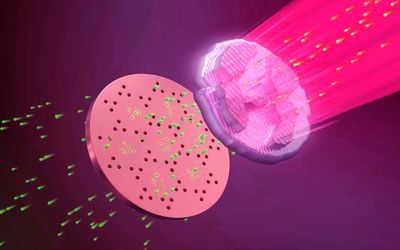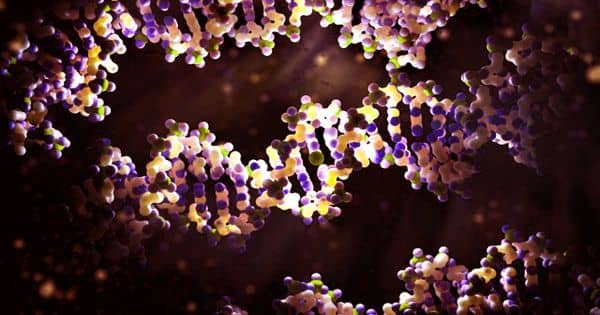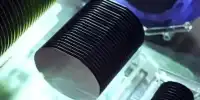Göttingen physicists say that they are the first to excel in filming a transformation process with incredibly high spatial and temporal resolution. Laser beams may be used to alter the properties of materials in an incredibly detailed manner. This principle has also been commonly used in technologies such as rewritable DVDs. However, the fundamental mechanisms typically take place at such unimaginably high speeds and at such a small scale that direct detection has so far eluded them.
Researchers at the University of Göttingen and the Max Planck Institute for Biophysical Chemistry (MPI) in Göttingen have now been able to film, for the first time, the laser transformation of the nanometre-resolution crystal structure and the slow motion of the electron microscope. I have published the findings in the Science journal.
Physicists succeed in filming a phase transition with extremely high spatial and temporal resolution. The use of laser beams to precisely change material properties is widely used in such technologies as rewritable DVDs.
The team, including Thomas Danz and Professor Claus Ropers, took advantage of the peculiar properties of a substance made up of atomicly thin layers of sulfur and tantalum atoms. At room temperature, the crystal structure is warped into tiny wave-like structures—a “charge-density-wave” is produced. At higher temperatures, there is a phase change in which the initial microscopic waves unexpectedly vanish. Electrical conductivity often varies significantly, which is an interesting result for nano-electronics.
The team took advantage of the peculiar properties of a substance made up of atomicly thin films of Sulfur and Tantalum atoms. At room temperature, the crystal structure is warped into tiny wave-like forms creating a charge-density-wave. At higher temperatures, a phase shift happens as the initial microscopic waves abruptly vanish and electrical conductivity changes significantly.

In their experiments, the researchers caused this phase transition with brief laser pulses and recorded a video of the load-density wave reaction. “What we observe is the rapid formation and growth of tiny regions where the material was switched to the next phase,” explains Thomas Danz, the first author from the University of Göttingen. “The Ultrafast Transmission Electron Microscope developed in Göttingen offers the highest time resolution for such imaging in the world today.” The unique advantage of the experiment is the recently developed imaging method, which is especially sensitive to the complex changes detected during this period of transformation. The Göttingen physicists use it to take images that are composed exclusively of electrons that have been scattered by the crystal’s waviness.
The researchers caused this phase transition with brief laser pulses and recorded a video of a load-density wave reaction. They witnessed the accelerated formation and growth of small regions where the material had passed to the next phase. The experiment is based on a recently evolved imaging method that is adaptive to the particular changes detected during this period of transformation. The Göttingen physicists use it to take pictures made entirely of electrons dispersed by the waves of the crystal.
Their cutting-edge methodology helps researchers to gain basic insights into light-induced systemic shifts. “We are already in a position to transfer our imaging technique to other crystal structures,” says Professor Claus Ropers, Head of Nano-Optics and Ultrafast Dynamics at the University of Göttingen and Director of the MPI for Biophysical Chemistry. “In this way, we not only answer fundamental questions in solid-state physics but also open up new perspectives for optically switchable materials in future, intelligent nano-electronics.”
Researchers have obtained profound insights into light-induced systemic shifts. The method addresses crucial questions in solid-state physics and opens up new insights for optically switchable materials in future smart nano-electronics.














